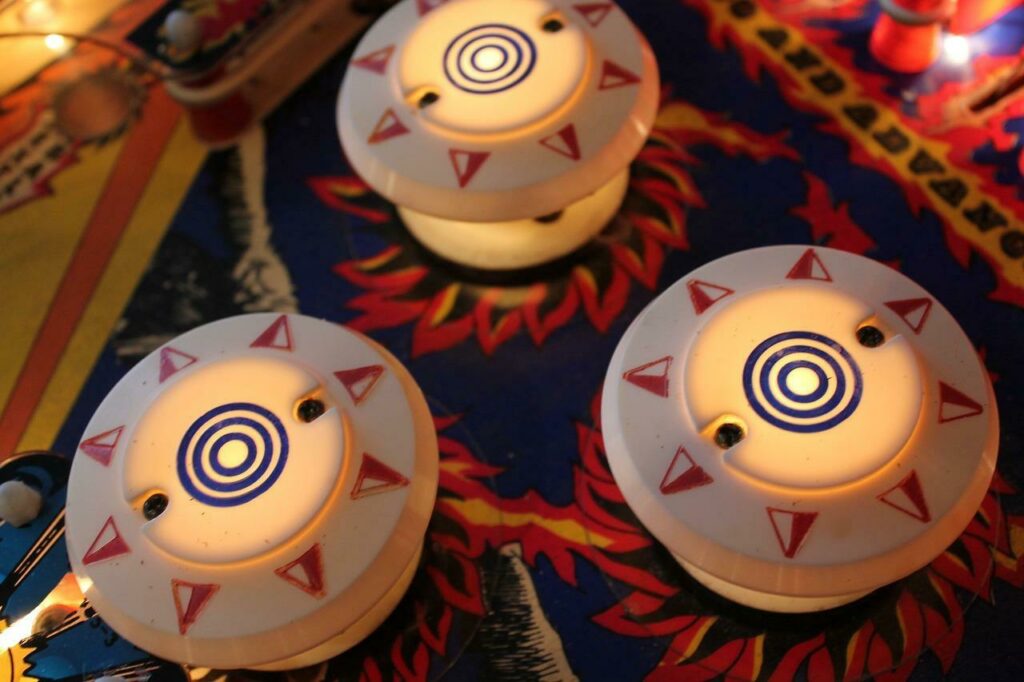
The Evolution of Pinball: From Classic Pinball to Modern Arcade Game
The pinball machine is a persistent icon of American gaming culture. When you enter a modern arcade, you likely still expect these flashing musical machines to be among the first things you see. While the modern pinball machine seems like a simple concept, it’s the result of decades of innovation. Let’s take a look at how pinball started and how it transformed into the classic arcade games we know and love today.
Bagatelle and the Original Pinball Machines
Pinball (along with its cousin, pachinko) is an offshoot of a French game called Bagatelle, invented in the late 18th century. This game was played like pool. Players used a cue stick to shoot the balls into holes on a flat table. These holes were surrounded by pins, which served as obstacles (and are probably where the word “pinball” came from).
In 1871, British inventor Montague Redgrave was granted a U.S. patent for his modifications to Bagatelle. His changes included:
- A coiled spring and plunger. These replaced the cue sticks that were used to launch the ball.
- An inclined table. This further differentiated the game from pool.
- Smaller balls. Marbles were easier to launch with the new spring.
These changes became the basis for classic pinball. Can you imagine the game today without them?
The Development of Pinball
These “improved” Bagatelle tables would undergo a few more changes before becoming pinball machines. Each new design takes us one step closer to the modern pinball machines we see in arcades worldwide.
Coin-Operated Machines
The first thing that could be considered a “pinball machine” was created by Automatic Industries in 1931. Its game, Whiffle Board, was the first coin-operated machine of its kind, and Ballyhoo, invented by Raymond Maloney, soon joined it. These games were made with wooden legs, rails, and tables.
Electricity
Electric batteries were used to improve the pinball experience starting in 1933. The buzzers, bells, and chimes they enabled made the experience more appealing and entertaining.
These features seem classic now, but they were revolutionary in the 1930s, particularly due to the lingering effects of The Great Depression. Audiences were amazed by the technological advancements, so much so that the emerging game of pinball continued to evolve rapidly.
Tilt Devices
Since classic pinball machines were smaller, picking them up and directing the ball was easy. In 1935, inventor Harry Williams responded with the tilt mechanism. This was added to pinball machines to detect movement. Today, most machines have two: one to see side-to-side movement and one, called the slam tilt, to sense when the player hits the machine.
Flippers
Are you surprised it took until 1947 to add flippers to pinball machines? Their first appearance was in “Humpty Dumpty” by D. Gottlieb Co. This addition transformed classic pinball, formerly a game of chance, into a skill-based endeavor. This undoubtedly helped pave the way for the “Golden Age of Pinball” (1948-1958).
Solid State Machines
In the 1970s, pinball transitioned to electronic, or solid-state, machines, such as Spirit of ’76 and Freedom. New gameplay innovations and features like electronic speech, sounds, and scoring defined these games.
The Game We Know Now: Modern Pinball Machines
Between the rise of video games and a few turbulent economies, pinball appeared to be in decline by the turn of the century.
Nowadays, those fears have been squashed. The most recent decade has seen a resurgence of pinball and new ways to play it. Machine makers have applied the latest technology to these classic games, including LED lighting, LCD backboards, and monitors. Some, like Stern Pinball’s Jurassic Park, even use animatronics!
Pinball has also entered the digital space. Not only are there fully digital machines in arcades, but there are similar games for consoles and PCs. You may remember games like Space Cadet that came with your new Windows computer.
Today, the future of pinball looks bright. It’s pretty impressive for a game that started on a wooden table with no flippers.
Pinballz: Your Best Stop for Pinball in Austin
For pinball fans looking for things to do in Austin, Pinballz has you covered and then some. Whether you want classic arcade pinball or its modern variants, you can experience it at any of our three Austin arcades. See one you like? We even have pinball machines for sale!
But why stop there? We have classic arcade games and experiences like bumper cars and laser tag. Our various games make us the best arcade in Austin for groups, families, and birthday parties.
Contact us today and see how we can meet your needs. An era of pinball history is waiting for you!

